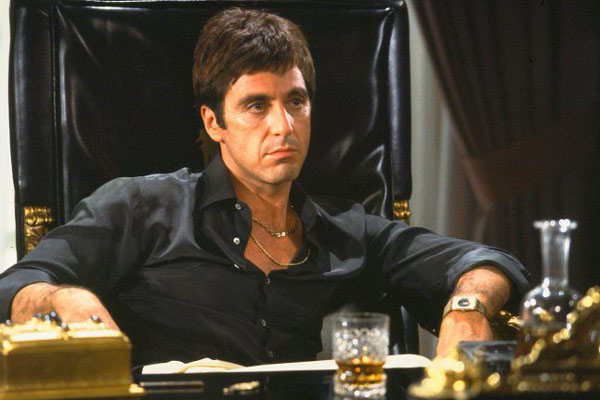 cast: Amitabh Bachan, Dharmendra, Sanjeev Kumar, Amjad Khan, Asrani, Hema Malini
cast: Amitabh Bachan, Dharmendra, Sanjeev Kumar, Amjad Khan, Asrani, Hema Malinidirected by: Ramesh Sippy.
screenplay: Salim Khan, Javed Akhtar; lyrics: Anand Bakshi;
music: R. D. Burman; cinematography: Dwarka Divecha
From unpromising beginnings (typically, industry insiders predicted that “unconventional” elements in this big-budget film would make it a resounding flop) Sholay exploded onto 70mm screens to become one of the Bombay film industry’s greatest success stories — the film that would, for vast audiences, definitively embody the masala blockbuster. Released on August 15th (Indian Independence Day) 1975, it played to sold-out houses at major urban venues such as downtown New Delhi's huge Plaza Cinema for more than two years, becoming the highest-grossing Indian film ever made, a laurel it held for nearly two decades. It is indisputably one of the most influential Hindi films of all time, and the question to ask Indian cinephiles is not whether they have seen it, but how many times?—answers in the double digits are not uncommon. Indeed, so popular was it that not only its songs, but its stylish dialogs were issued on audiocassette, and can still be recited by fans throughout India. One of the films that helped make Amitabh Bachchan the ‘70s superstar par excellence, Sholay also catapulted Amjad Khan to stardom in the role of the sadistic bandit Gabbar Singh, and is said to have ushered in the era of the “supervillain.” While giving a quintessentially Indian turn to the now-international mythos of the Western, Sholay also set new standards in cinematography and action sequences—as in the spectacular opening train scene.
The film’s entertainment value holds up well, as does its cinematic craft, and so it remains a fine vehicle for introducing novice Western viewers to the phenomenon of the "masala film." Literally meaning "spice," masala commonly refers to a blend of multiple spices (as in "curry" powder), and cinematically to an action-adventure-romance that is expected to offer a three-hour multi-course banquet of emotional flavors, encompassing slapstick comedy, romance, violent action, social and family melodrama, and of course, a half dozen or so song-and-dance sequences. First-time Western viewers sometimes find such combinations indigestible—a disquieting emotional roller-coaster ride through genre terrains that "properly" belong to three or four different films. Another unsettling trait is the Indian filmmakers' apparent tendency to "quote" motifs or images from Western cinemas (e.g., Sholay's pop-critical label "curry Western,” and its obvious citations of Charlie Chaplin, Sergio Leone, Sam Peckinpah, and of Butch Cassidy and the Sundance Kid). Again, novice viewers often see this less as homage and creative adaptation than as ludicrous and uncomprehending copying of "original" Hollywood ideas, resulting in a chaotic pastiche. Yet the fact that scores of masala films are produced each year, including a handful of hits, suggests that the genre has, for receptive audiences, an aesthetic logic of its own. As the most acclaimed film of this genre, Sholay is useful for raising as well as problematizing cross-cultural cinematic stereotypes.













